Gallery of Timepieces
The Gallery of Timepieces, or Gallery of Clocks, nestled in the southern wing of Hall for Ancestry Worship (Fengxiandian), east of the Inner Court of the Forbidden City, boasts over 200 rare clocks and watches from the 18th to early 20th centuries. Crafted in China and abroad, these timepieces served not only as practical devices but also as entertaining gadgets of exquisite craftsmanship.
As wandering among the treasures, visitors will admire clocks and watches from France, Britain, Switzerland and China.
As wandering among the treasures, visitors will admire clocks and watches from France, Britain, Switzerland and China.
French Clock Exhibition Area
This area of the Gallery of Clocks showcases a unique blend of technological sophistication and artistic elegance, often integrating elements from the 19th-century Industrial Revolution into clock designs, with a particular focus on graceful lines in decoration.
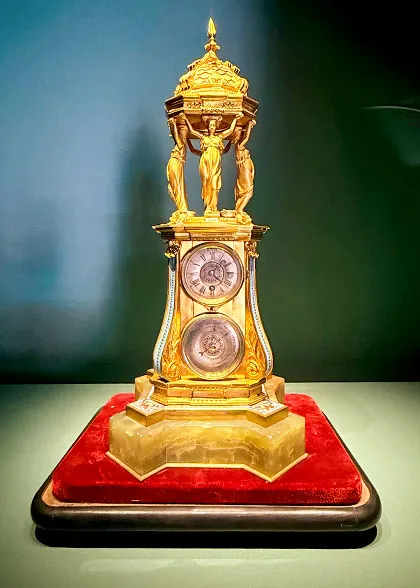 | 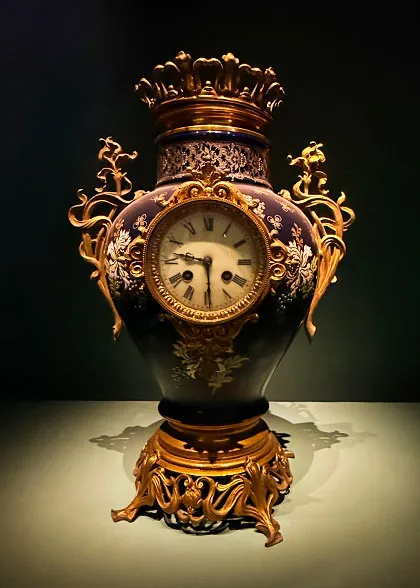 | 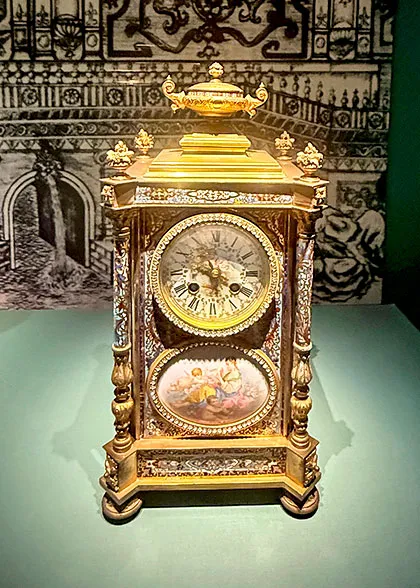 |
| Gilded Pavilion Clock | Gilded Porcelain Clock | Clock with Hot Air Balloon |
Highlight Exhibit: Clock with Hot Air Balloon
Dimensions: 60x16x16cm (23.6x6.3x6.3in), Crafted Late 19th Century
Inspired by France's first manned balloon flight in 1783, this clock looks like a small hot air balloon. At the “balloon” surface, there's a clock with hands that tell the time. Below is a tiny basket with a sailor inside, holding an anchor. When its mechanism activated, the balloon and the basket will swing gently, as if flying in the air.
British Clock Exhibition Area
This area highlights clocks impressive in size and intricate in detail, often themed around ancient Greek mythology, royal chariots, and pastoral scenery. Adorned with colorful glass and gilded carvings, these clocks evoke the grandeur of Britain's imperial past.
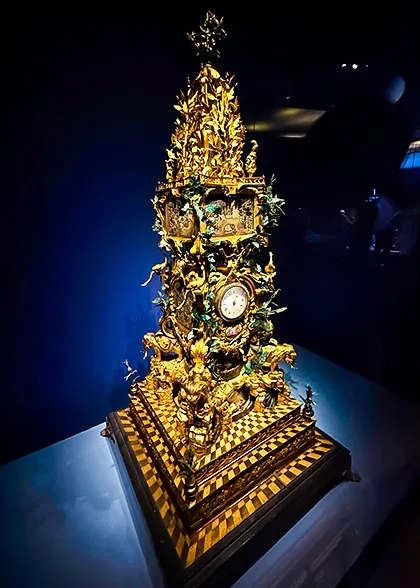 | 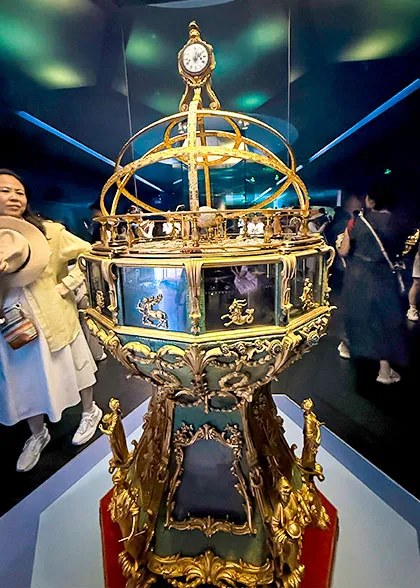 | 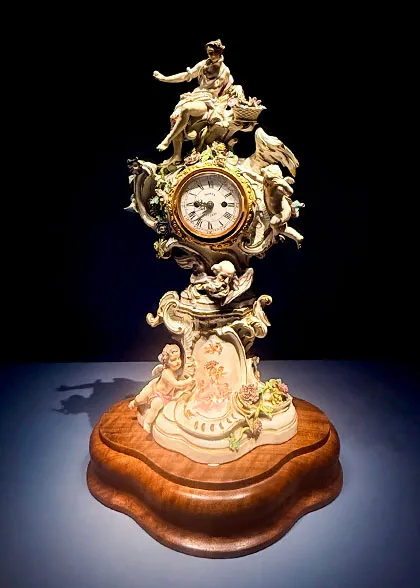 |
| Elephants, Peacocks, & Plants Clock | Clock Modeling Solar System | Angel Porcelain Clock |
Highlight Exhibits
1. Gilded Copper Writing Automaton Clock
 |
| Gilded Copper Writing Automaton Clock |
Dimensions: 231x77x77cm (91x30.3x30.3in), Crafted 1770
This four-story pagoda-style clock boasts a European gentleman on the bottom floor, kneeling on one knee and holding a brush. Ink the brush before activating, and then expect for the magic moment - the gentleman writes the eight Chinese characters "八方向化,九土来王" (meaning "All directions are civilized, and all lands submit to the king") neatly on the paper. As the same time, his head sways gently.
2. Gilded Copper Chariot Chiming Clock Pulled by an Elephant
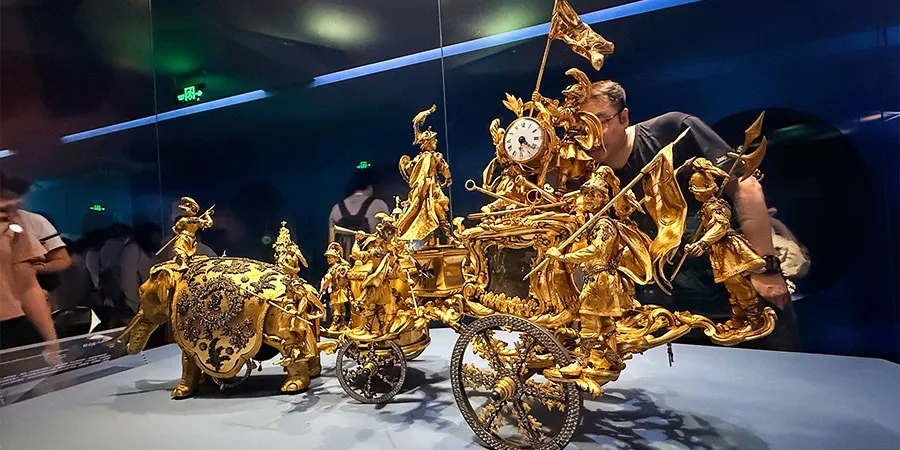 |
| Chariot Chiming Clock Pulled by an Elephant |
Dimensions: 70x136x55cm (27.6x53.5x21.7in), Crafted 1780
This clock, the longest in the collection, depicts a robust elephant pulling a four-wheeled chariot with 11 soldiers on board. It comes alive when the inner intricate mechanisms operate to make the elephant blink, flap ears, curl and extend trunk, and wag tail, all in harmony with music.
Swiss Timepieces and Pocket Watch Exhibition Area
In this area, you'll discover not only intricate Swiss clocks but also pocket watches from the USA, Japan, and Britain that fit snugly in your pocket, brooch watches adorned with sparkling pearls, and even watches that double as telescopes and perfume bottles.
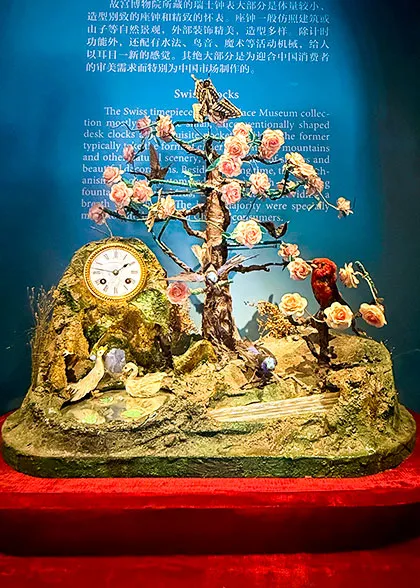 | 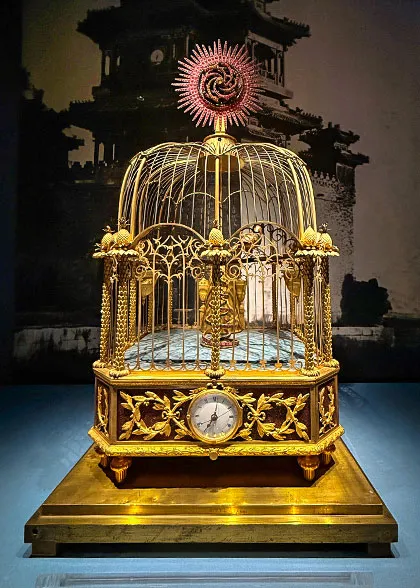 | 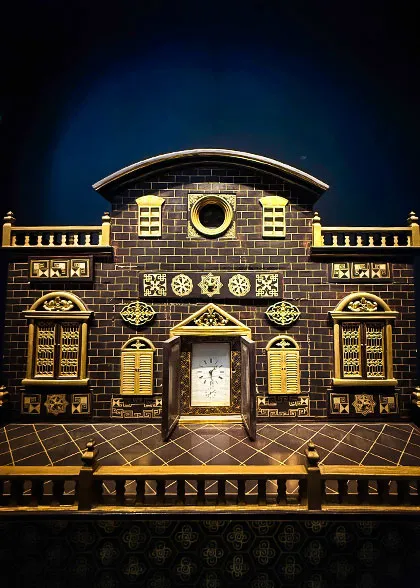 |
| Chirping Birds, Rockery, & Fountain Clock | Gilded Birdcage Clock | Gold-painted Mansion Clock |
Highlight Exhibits
1. Clock with Chirping Birds, Rockery, and Fountain
Dimensions: 71x73x38cm (28x29x15in), Crafted 19th Century
Dimensions: 71x73x38cm (28x29x15in), Crafted 19th Century
This clock brings nature indoors and boasts two plum trees. One bears red blossoms, drawing butterflies and kingfishers flying around. Beside are the mountain stones, with the clock at the top. The other blooms yellow flowers with a red bird standing on, singing as the mechanics set up. A clear stream flows ahead, which is actually made of glass.
2. Gilded Copper Telescope Watch with Agate Inlay
Dimensions: 10cm (3.9in) Long, 4cm (1.6in) Wide, 1.4cm (0.55in) Watch Dial, Crafted 18th Century
It was shaped in a telescope and covered in agate, with dial plate embedded in the middle of the lens cover and surrounded by colorful gemstones. When viewing scenery, the lens cover can be removed to use the telescope.
Chinese Clock Exhibition Area
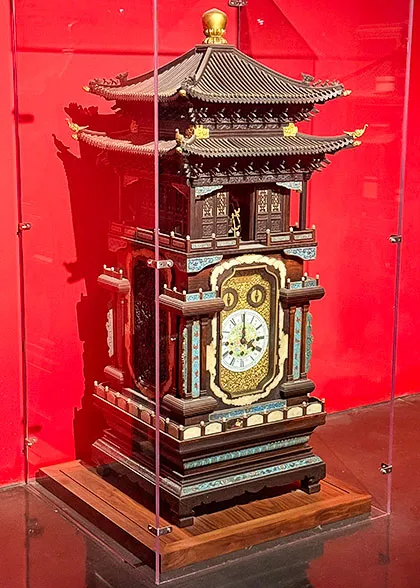 |  | 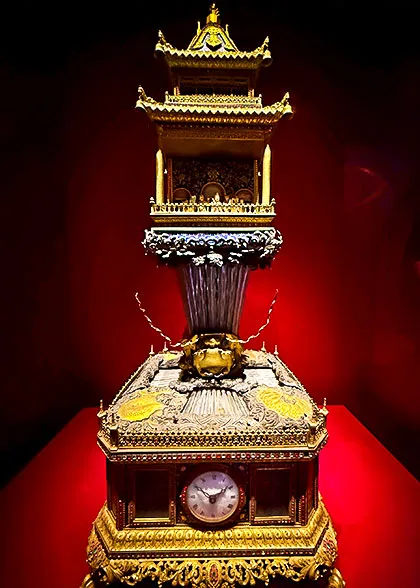 |
| Rosewood & Enamel Pavilion Clock | Gourd Clock with an Auto-open Door | Chinese Pavilion Clock |
This section features clocks and watches made in Guangzhou (China's first trading port in the southeast coastal area), Suzhou (China's pioneering clock production site in the south of the Yangtze River), and imperial workshops during the reigns of Emperors Qianlong and Jiaqing (1735~1820). The design often incorporates Chinese architectural or natural elements such as pavilions, towers, flowers, and fruits.
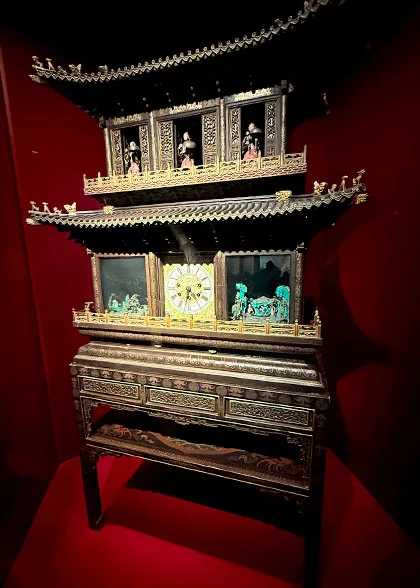 |
| Immortals Blessing Longevity Clock |
Highlight Exhibits: Black Lacquer and Painted Immortals Blessing Longevity Pavilion Clock
Dimensions: 185x102x70cm (72.8×40×27.6in), Crafted in 1749 by the Qing Imperial Workshops
This clock, resembling an ancient pavilion, reveals its magic at the hour marks of 3, 6, 9, and 12. At these times, three doors on the upper floor open, and clock figures emerge to their spots, striking the clock and triggering a melody.
Meanwhile, the cranes, immortals ascending among clouds, and a pavilion rising from a sea cave, come alive, all symbolizing longevity. The right box shows an elderly deity receiving treasures from eight Chinese ancient immortals, celebrating his immortality. It is one of Emperor Qianlong's (1711~1799) favorite.
Questions You May Ask…
1. Why are there Western clocks in the Forbidden City?
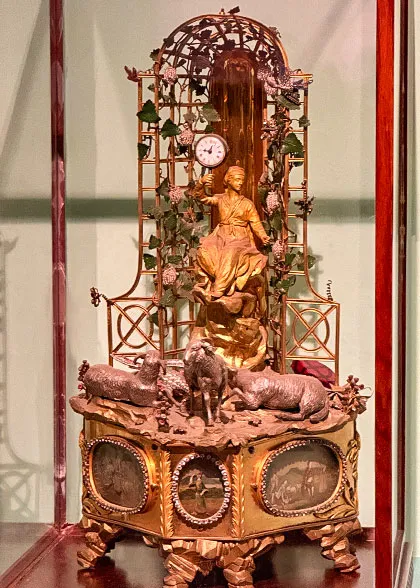 |
| A Western Clock in the Gallery |
In the 16th century, a group of European missionaries led by Matteo Ricci wanted to spread Catholicism in China. They arrived at the Forbidden City and presented exotic treasures to the emperor, including two self-striking clocks, which were a novelty at the time since China hadn't yet mastered the technics. Intrigued by these devices, the emperor granted the missionaries residence permits, thus opened doors for their religious mission.
2. Do I need to make a reservation and purchase tickets in advance for the Gallery? How long is the recommended visit time?
Yes, you need to make a reservation and buy the additional 10-yuan ticket along with your Forbidden City admission. It is recommended to spend 1 to 1.5 hours to explore the exhibits.
Tip: If you miss out on booking a ticket for the Gallery of Timepieces online, you can still try to purchase a same-day ticket by scanning the QR code at the entrance upon arrival. Please note that this is more viable on weekdays compared to weekends or holidays.
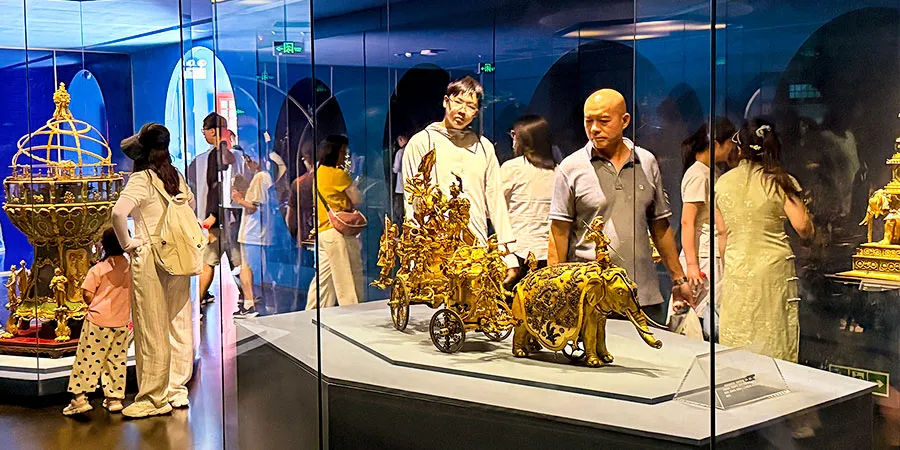 |
| Gallery of Clocks, Forbidden City |
3. What are the opening hours of the Gallery of Timepieces?
Closed on Mondays except public holidays. Plan your visit accordingly!
 |
| Gallery of Timepieces, Forbidden City |
- Last updated on Oct. 09, 2025 by Jally Zhang -